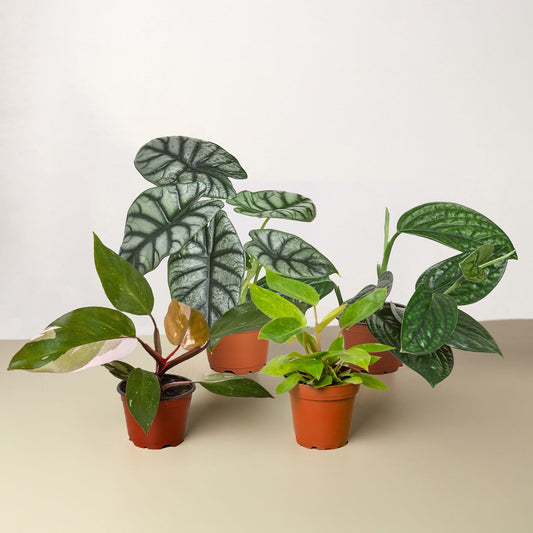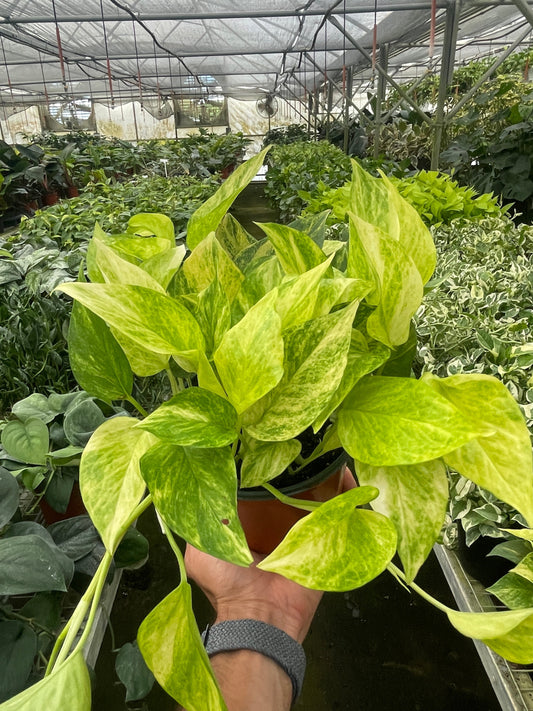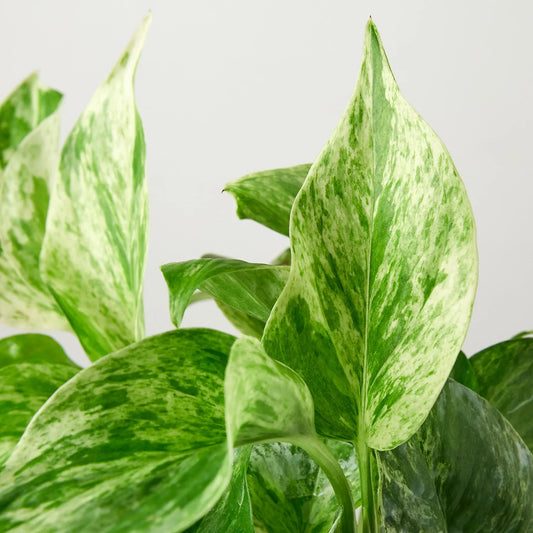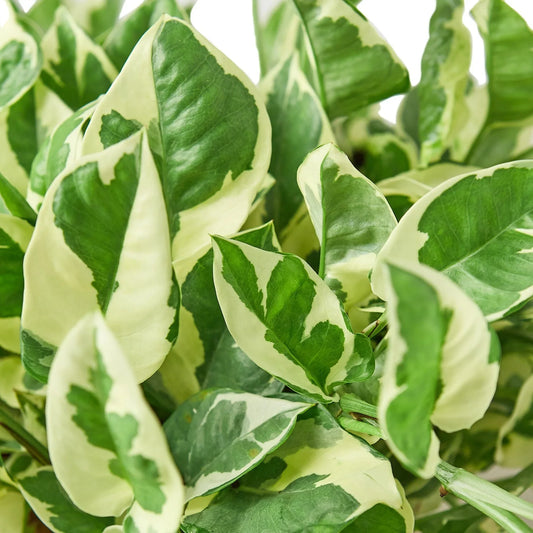19 Common Problems With Dendrobium Orchids
Cafe Planta Team
Dendrobium orchids are a beautiful addition to any plant collection, with their elegant flowers and unique appearance. However, like all living things, they can face a range of problems that might leave you scratching your head. Whether it's droopy leaves, stubborn blooms, or unexpected pests, these orchids can present challenges that test even the most seasoned plant parents.
In this article, we'll explore 19 common problems that Dendrobium orchids might encounter. From watering mishaps to lighting dilemmas, we'll guide you through each issue, offering practical solutions and tips to help your orchids thrive. So grab a cup of tea, and let’s get started on making your Dendrobium orchids the envy of your plant-loving friends!
1. Overwatering Woes
One of the most common problems with Dendrobium orchids is overwatering. These plants don’t like to sit in water, and too much moisture can lead to root rot—a real nightmare for any plant lover. Overwatered orchids often show yellowing leaves and a general lack of vigor.
So, how do you avoid this? First, make sure your orchid pot has good drainage. It’s a good idea to use a potting mix specifically designed for orchids, which usually consists of bark, charcoal, and perlite. This mix ensures that water drains quickly and air can circulate around the roots.
When it comes to watering, stick to a schedule that matches your plant’s needs rather than a strict calendar. Typically, you’ll want to water your orchid once a week, but this can vary based on the humidity and temperature of your home. Always check if the top inch of the potting mix is dry before watering again.
2. Underwatering Challenges
On the flip side, underwatering can also spell trouble for your Dendrobium orchid. If the leaves start to wrinkle or the pseudobulbs become shriveled, your plant might be thirsty. Unlike overwatering, underwatering can be corrected more easily by simply adjusting your watering routine.
To keep your orchid properly hydrated, observe the plant's behavior and environment. If your home is particularly dry, you might need to water more frequently. Use a humidity tray or a room humidifier to help mimic the orchid’s natural tropical habitat, which can make a huge difference in its overall health.
3. Light Issues: Too Much or Too Little
Dendrobium orchids are somewhat picky about light. Too much direct sunlight can scorch their leaves, while too little light can prevent them from blooming. Finding the sweet spot is crucial.
These orchids generally prefer bright, indirect light. If you notice that the leaves are turning red or brown, it's a sign that they’re getting too much sun. Move your orchid to a location where it receives filtered light, such as behind a sheer curtain or in a spot that gets morning sun and afternoon shade.
On the other hand, if your orchid isn't flowering, it might need more light. Consider moving it closer to a light source, but avoid direct sunlight, especially through glass, as this can magnify the sun's intensity.
4. Temperature Troubles
Temperature plays a significant role in the health of Dendrobium orchids. These plants thrive in a warm environment, with temperatures ranging from 65°F to 85°F during the day and slightly cooler at night. Sudden temperature changes can stress the plant, leading to leaf drop or failure to bloom.
Maintain a stable temperature by keeping your orchid away from drafts, heaters, and air conditioners. If you live in a region with cold winters, ensure your plant is not too close to frosty windows.
If your orchid isn't performing well, consider using a thermometer to monitor its environment. Even a small change in temperature can impact your plant’s health, so keeping everything consistent can go a long way.
5. Pests: Unwanted Visitors
Like all plants, Dendrobium orchids can sometimes invite unwanted guests. Common pests include spider mites, aphids, and mealybugs. These little critters can cause harm by sucking the sap from your plant, leading to weakened growth and discolored leaves.
To keep pests at bay, regularly inspect your plants, especially the undersides of the leaves and around the base. If you notice any pests, isolate the affected plant to prevent them from spreading to others.
There are several ways to tackle pests. You can start by washing the plant with a gentle stream of water or wiping it down with a soapy water solution. For more severe infestations, consider using neem oil or an insecticidal soap, which are both effective and environmentally friendly.
6. Fungal and Bacterial Infections
Fungal and bacterial infections can be a real challenge for Dendrobium orchids. These infections often occur in humid conditions and can manifest as black spots on leaves, wilting, or a bad odor coming from the plant.
Preventing infections starts with good air circulation. Make sure your orchids aren’t overcrowded, and consider using a fan to keep the air moving. If your plant is infected, remove any affected leaves and avoid getting the foliage wet when watering.
Treat infections with a fungicide or bactericide, following the instructions carefully. Also, ensure your tools and pots are clean, as infections can spread through contaminated equipment.
7. Nutrient Deficiencies
Orchids need a balanced diet to thrive, and nutrient deficiencies can lead to problems such as poor growth or discolored leaves. Common deficiencies include nitrogen, phosphorus, and potassium.
To keep your orchid well-fed, use a fertilizer specifically formulated for orchids. These fertilizers often have a balanced ratio of nutrients, providing everything your plant needs to flourish. Apply fertilizer every two weeks during the growing season, and reduce the frequency in the colder months.
Watch for signs of deficiency, such as yellowing leaves or stunted growth, and adjust your feeding schedule accordingly. Remember, over-fertilizing can be just as harmful as under-fertilizing, so always follow the recommended dosage.
8. Potting Problems
Dendrobium orchids need the right pot and medium to thrive. A pot that’s too large can retain too much moisture, while one that’s too small might restrict root growth. Similarly, using the wrong potting medium can lead to poor drainage or insufficient aeration for the roots.
When potting your orchid, choose a container that’s slightly larger than its root mass. Orchids prefer to be a bit snug in their pots, which helps them feel secure. Use a medium like orchid bark that allows for good airflow and drainage.
Repotting should be done every 1-2 years or when you notice the potting medium breaking down. This ensures your orchid gets the nutrients it needs and prevents issues like root rot from developing due to compacted soil.
9. Blooming Challenges
One of the most rewarding aspects of growing Dendrobium orchids is watching them bloom. However, getting them to flower can sometimes be tricky. If your orchid refuses to bloom, it might be due to inadequate light, improper feeding, or stress.
To encourage blooming, ensure your orchid gets plenty of bright, indirect light. Adjust your feeding schedule to provide a bloom-boosting fertilizer with higher phosphorus content. Also, ensure your plant experiences a slight drop in nighttime temperatures, which can trigger blooming in some Dendrobium species.
Patience is key with orchids. Sometimes, a plant just needs a little time to adapt to its environment before it starts showing off its beautiful flowers.
10. Leaf Drop
Leaf drop can be alarming, but it’s not always a sign of distress. Dendrobium orchids naturally shed older leaves to make way for new growth. However, if you notice excessive leaf drop, it might be due to stress factors like overwatering, pests, or environmental changes.
Inspect your plant for any other signs of trouble, such as root rot or pest infestations, and address these issues promptly. Make sure your orchid is in a stable environment with proper light, temperature, and humidity levels to reduce stress.
Regularly remove any dead or yellowing leaves to keep your plant looking tidy and to prevent the spread of disease.
11. Root Health
Healthy roots are the foundation of a thriving orchid, and Dendrobium orchids are no exception. Roots should be firm and white or light green. Brown, mushy roots indicate rot, while dry, brittle roots suggest dehydration.
To maintain root health, ensure your orchid is potted in a well-draining medium. Avoid overwatering, and let the potting mix dry out slightly between waterings. If you suspect root rot, remove the orchid from its pot, trim away any affected roots, and repot in fresh medium.
Healthy roots will support robust growth and beautiful blooms, so taking care of them is a priority.
12. Sunburn
Just like humans, orchids can suffer from sunburn. This often happens when they’re exposed to direct sunlight for too long. Sunburned leaves will develop brown or black spots, which can be unsightly and harmful if left unchecked.
Protect your orchid by placing it in a spot with filtered light. If you’ve moved your plant outdoors for the summer, make sure it's in a shaded area. Indoors, a sheer curtain can work wonders to diffuse harsh sunlight.
If sunburn does occur, remove the damaged leaves to prevent any potential infections. The plant will eventually grow new foliage to replace what’s been lost.
13. Flower Bud Blast
Few things are as disappointing as watching your orchid’s buds fall off before they even bloom. This phenomenon, known as bud blast, can be caused by sudden changes in temperature, humidity, or light.
To prevent bud blast, keep your orchid’s environment stable. Avoid moving the plant once buds have formed, as even a change in location can cause stress. Make sure your orchid is receiving consistent care and that you’re not over- or under-watering during this delicate phase.
If bud blast occurs, don’t worry too much. With the right care, your orchid will likely try again when conditions are more favorable.
14. Adaptation Period
When you bring a new Dendrobium orchid home, it may need time to adjust to its new environment. During this period, it might not look its best, and that’s perfectly normal.
Give your orchid time to acclimate by placing it in a suitable spot with the right light, temperature, and humidity. Avoid repotting or making any drastic changes during this time, as this can add to the plant's stress.
With patience and gentle care, your orchid will settle in and start to thrive in its new home.
15. Aging
Like all living things, orchids have a natural lifespan. As they age, they might lose some of their vigor and bloom less frequently. This is a natural process, and while you can’t stop aging, you can make sure your orchid enjoys its golden years.
Continue providing consistent care, paying attention to its specific needs. Older orchids might benefit from a slightly reduced watering and feeding schedule, as their growth slows down.
Celebrate the beauty and longevity of your orchid, and cherish the many blooms and memories it's given you over the years.
16. Repotting Stress
Repotting can be stressful for orchids, and Dendrobiums are no exception. After repotting, your plant might look a little worse for wear. This is usually temporary, as the plant adjusts to its new environment.
To minimize stress, repot only when necessary, such as when the potting medium has broken down or the plant has outgrown its current pot. Be gentle when handling the roots, and make sure the new potting medium is similar to the old one.
Give your orchid time to recover, and reduce watering slightly until you see new growth, indicating that the plant has settled in.
17. Environmental Changes
Orchids can be sensitive to changes in their environment. Moving them to a new location, a change in season, or even fluctuations in household conditions can affect their health.
Try to keep changes gradual and avoid any drastic shifts. When moving your orchid to a new spot, do so slowly, allowing it to adjust over a few days. Monitor the plant closely for any signs of stress, such as wilting or leaf drop, and adjust care as needed.
Keeping a consistent routine will help your orchid adapt more easily to any changes in its environment.
18. Incorrect Pruning
Pruning is an essential part of orchid care, but doing it incorrectly can harm your plant. Pruning should be done to remove dead or damaged growth, but over-pruning can stress the orchid and impact its ability to bloom.
Use clean, sharp scissors to prune your orchid, and only remove what is necessary. Dead flower spikes can be cut back to the base, while old or damaged leaves should be removed carefully.
Pruning not only keeps your orchid looking its best but also promotes healthy new growth and flowering.
19. Ignoring Dormancy
Some Dendrobium orchids go through a dormancy period, usually in the winter months. During this time, growth slows down, and the plant might not bloom. Ignoring dormancy can lead to overwatering and stress.
Recognize when your orchid is entering dormancy by observing its growth patterns. Reduce watering and feeding during this period, and provide a cooler environment if possible.
Once dormancy is over, gradually increase care to encourage new growth and flowers. Understanding and respecting this cycle will help keep your orchid healthy and happy year-round.
Final Thoughts
Navigating the care of Dendrobium orchids can feel like a learning journey, filled with both challenges and triumphs. By understanding and addressing these common problems, you’ll be well on your way to having happy, healthy orchids that brighten your home.
At Cafe Planta, we're passionate about helping you succeed in your plant care journey. Whether you’re looking for new plants to add to your collection, need accessories, or just want to chat about plant care, we're here for you. Feel free to reach out via email or drop us a message on Instagram. Let’s grow together!



















